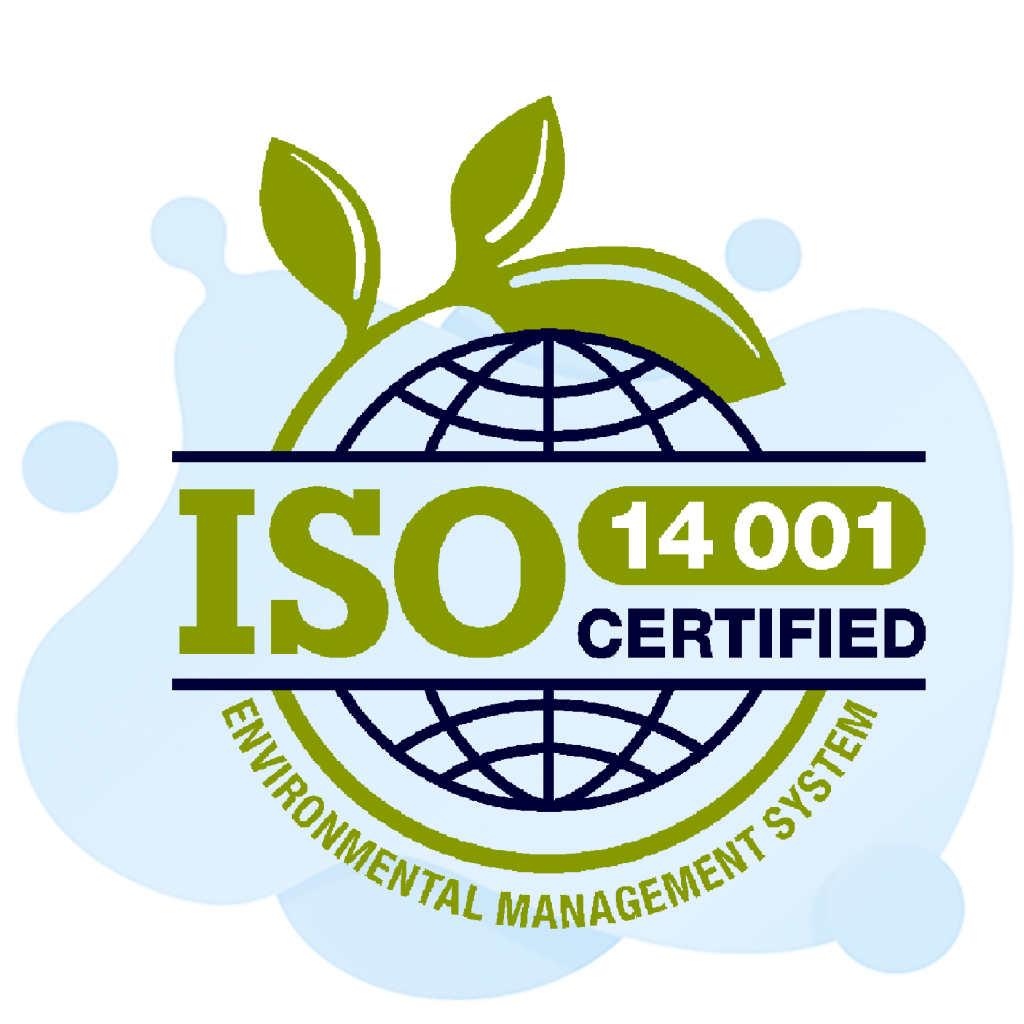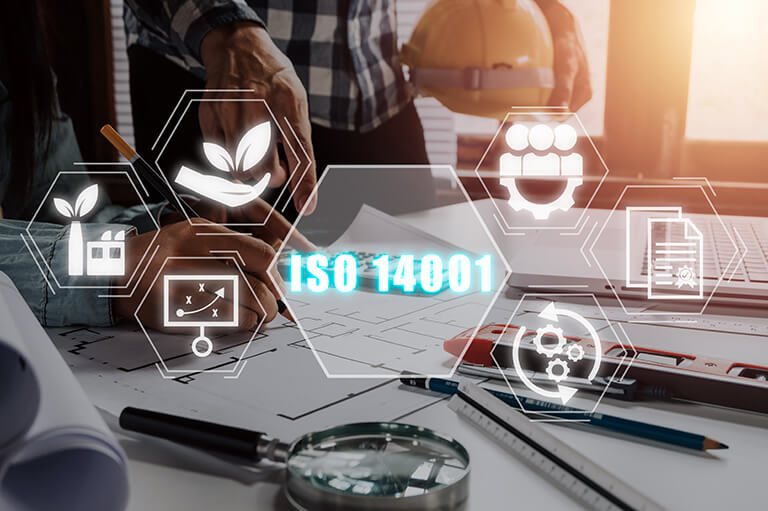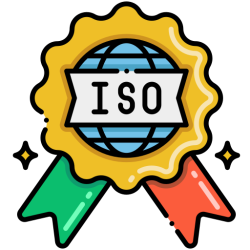ISO 14001 Standard

ISO 14001 is a framework for developing an environmental management system. It guides organizations of any size to set up an effective EMS and achieve certification. It aims to improve performance through the practice of continuous improvement.
Most respondents cited improved waste and resource management as an outcome of their EMS. Companies reported reducing their consumption of energy, paper, plastic and chemicals. Some also used their EMS to improve their community outreach efforts.
ISO 14001
The ISO 14001 international standard provides a framework for an organization to develop an environmental management system. Its structure is based on an organization’s policy and consists of programs, objectives and targets for continuous improvement. These goals can be set in a variety of ways, including through the use of an environmental impact assessment (EIA) and measurable environmental performance indicators.
An organization’s commitment to its environmental goals must be reflected in its practices and policies. It must also be visible to its employees and the public. For example, encouraging employees to carpool will reduce the company’s energy costs and help reduce carbon dioxide emissions. The organization should also keep records of its progress and publish them.
PECB’s ISO 14001:2015 Foundation training course is designed to provide delegates with an understanding of the requirements of the environmental management system (EMS) standard as specified in ISO 14001. Delegates will be able to understand the different modules of the EMS, such as the EMS policy, operational controls, performance measurements, management commitment, internal audit, and management review.
ISO 14001 Training
A comprehensive environmental management system is essential for any company that has a significant impact on the environment. It can help you reduce waste, save money on energy, and meet environmental requirements. However, implementing an EMS can be costly and requires a great deal of time and effort. It also needs to be managed properly, including through an internal audit. To make this process easier, you should use software that can provide the required documentation and track your EMS performance.
ERA offers an online software system that provides all the tools you need to manage your ISO 14001 certification. This includes a training module, an EMS documentation template, and a project plan. It also allows you to track progress, and it helps you reduce the number of mistakes by identifying areas where you can improve. It can also save you money by reducing the cost of obtaining your ISO 14001 certificate. Moreover, it can also be used to reduce the costs of monitoring your business’s environmental impact. A third-party monitoring system can provide a small business with the expertise and resources it may lack internally, while providing larger companies with a central database for employee follow-ups.

ISO 14001 Environmental Management System
The ISO 14001 environmental management system (EMS) standard is a framework for improving the environment. Its processes encourage companies to make continuous improvements and use more sustainable practices. It also helps them meet legal requirements. It is flexible enough to be used by any company, regardless of size or industry. Its audit and feedback process help businesses improve their performance.
A EMS consists of a set of procedures that help companies identify and eliminate significant environmental impacts. It starts with establishing an environmental policy. Then, it creates a plan with objectives and targets. Next, it implements the plan and measures its performance. After that, top management reviews the results and makes changes to the plan.
The benefits of implementing an EMS can include improved customer satisfaction, potential cost savings, and increased efficiency in meeting regulatory requirements. In addition, it can improve a company’s public posture with outside stakeholders. Finally, it can increase its access to international markets. In this era of increasing consumer awareness, customers are looking for companies that take their environmental concerns seriously.
ISO 14001 Requirements
Whether it’s saving water or energy, reducing waste disposal or minimizing the amount of air pollution emitted, there are many benefits to being ISO 14001 certified. It helps a company reduce its environmental footprint, cultivates employee satisfaction, and enhances customer loyalty.

However, getting to this point can take several months and requires a team of experts to implement the necessary procedures and documentation. In addition, it can be costly. But once the company gets its certification, it can enjoy many benefits, including a better return on investment.
The first step of the ISO certification process is an initial or preliminary assessment and document review. This involves assessing an organization’s readiness for a full audit. It also includes analyzing the impact of its business on the environment and how it plans to improve.
After a company has been certified, it must keep up its work to maintain this status. It must perform regular audits, update its EMS documents, and develop new procedures to ensure its compliance with the standard. In addition, it must keep track of its emissions and waste disposal.
ISO 14001 Audit
Whether your organization is already ISO certified or you are looking to become certified, audits are an important part of any successful EMS. An ISO 14001 internal audit is a great way to evaluate the effectiveness of an EMS and how well it supports the organization’s goals and objectives. It also provides valuable feedback to the organization on its EMS performance and can help improve operational efficiency.
During the ISO 14001 audit, an auditor will review how the company manages its environmental responsibilities. This includes evaluating the leadership team’s commitment to the EMS and how it communicates with other employees. The auditor will also check the leadership team’s ability to provide resources and support for the EMS.
The ISO 14001 standard is based on the Plan-Do-Check-Act (PDCA) process and over 350,000 organizations are currently certified to it. However, the standard is being updated to ISO 14001:2015 and it is important to understand how the changes will affect your EMS. If you don’t plan for these changes, you could be exposed to unwanted findings during your next audit.

ISO 14001 Consultant
ISO 14001 is a globally recognized standard for Environmental Management Systems. It is designed to help companies reduce negative impact on the environment while still meeting business goals. It can improve brand perception, encourage ecological awareness, and even save costs through efficiency and waste reduction.
Achieving ISO 14001 certification enables you to demonstrate your commitment to the environment and win new business. It can also improve your company’s reputation and increase employee morale. In addition, it can boost productivity and profits. The cost of implementing the standard varies depending on your organization’s size and scope, as well as the third-party certification body you choose.
The latest version of the standard is ISO 14001:2015. It includes a new clause that requires an organization to identify both risks and opportunities when creating its EMS. This is in contrast to previous versions of the standard, which only required an organization to identify risks. The purpose of this change is to reduce the amount of time and effort that goes into developing and maintaining a management system.
ISO 14001 Accreditation
Achieving ISO 14001 accreditation can help businesses reduce their environmental impact and increase efficiency. It can also improve their public image, boost employee morale and potentially save costs. However, achieving these benefits requires time and investment. The process of designing and implementing an EMS can take months or even years, and it is crucial to have a system that tracks and records every step. In addition, employees will need training on the new procedures and this can add to the overall duration of the process.

ISO 14001 is a management system standard that can be used by any business that has environmental considerations or responsibilities. This includes manufacturing, suppliers, service industries and high-risk businesses. The standard focuses on evaluating all aspects of the business, including procurement, storage and distribution of resources and reducing environmental impact. It also aims to improve operational efficiencies and increase business resilience to future change. Smithers Quality Assessments Division has years of experience helping companies achieve ISO 14001 certification. It offers exceptional customer service and will work with you to make the process as smooth as possible.
ISO 14001 Certification Cost
Getting an ISO 14001 certification is not cheap, but it is worth the effort. In the long run, it can save a lot of money by reducing legal fines, energy costs and distribution costs. It also increases customer trust and improves your corporate image among other companies.
The standard sets out requirements to help businesses discover and control the impacts their operations have on the environment. It provides a structure to help you achieve legal compliance, reduce waste and pollution, and keep improving. It can also help you save on insurance premiums by reducing the number of environmental incidents.
Several major companies, including IBM, 3M, Ford Motor and Sony, have certified their sites to ISO 14001, the British EMS standard, and EMAS (European Eco-Management and Audit Scheme). SGS-Thomson MicroElectronics, for instance, has registered 16 of its facilities in the United States and other countries to the standard. The company says it has achieved considerable cost savings through the program. These savings are due to lower distribution costs, energy consumption, waste management and legal fines.